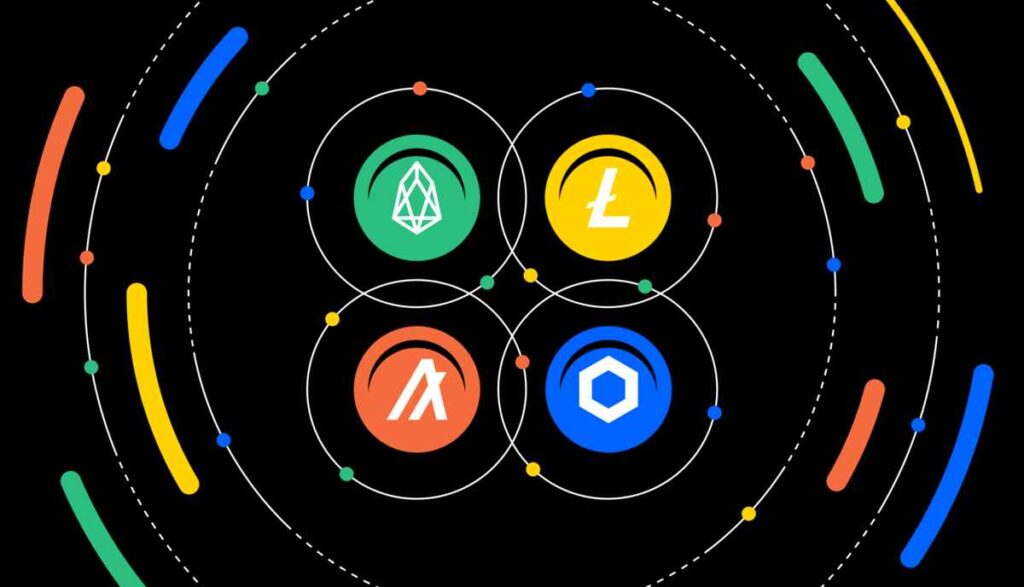Best Coins for Staking in 2024 Which Meme Coin is Performing
Best Coins for Staking

Best Coins for Staking has quickly become one of the most popular ways to earn passive income in the cryptocurrency world. With the increasing interest in blockchain technology and decentralized finance, staking offers investors an opportunity to earn rewards while supporting the network’s operations. But not all coins are created equal when it comes to staking. In this guide, we will explore the best coins for staking in 2024, offering a comprehensive look at their potential returns, staking requirements, and the benefits they provide.
What is Staking?
Staking is the process of locking up a specific amount of cryptocurrency in a wallet to support the operations of a blockchain network. It is mainly used in Proof of Stake (PoS) and its variations like Delegated Proof of Stake (DPoS) or Proof of Authority (PoA) blockchains. Best Coins for Staking In exchange for staking your assets, you receive rewards in the form of additional tokens. This system allows you to earn passive income while helping to secure the network.
Why Best Coins for Staking is Important for Blockchain Networks

Staking plays a crucial role in maintaining the integrity of the blockchain. Unlike traditional Proof of Work (PoW) blockchains like Bitcoin, which rely on miners to validate transactions, PoS blockchains depend on stakers to ensure the network’s security and validate new transactions. As a result, staking not only rewards participants but also strengthens the overall security and decentralization of the network.
Top Best Coins for Staking in 2024
1. Ethereum (ETH)
After the transition to Ethereum 2.0, Ethereum has become one of the most attractive coins for staking. With a large user base, robust developer community, and widespread adoption, staking ETH offers both stability and excellent rewards.
- Staking Requirements: To become a validator, you need a minimum of 32 ETH. However, you can also join staking pools if you do not have enough ETH.
- Annual Yield: The staking reward for Ethereum ranges between 4% and 10% depending on the total amount of ETH staked.
- Risk Level: Medium. Ethereum is a leading platform, but volatility in the crypto market still poses risks.
2. Cardano (ADA)
Cardano is known for its focus on scalability and sustainability. With its Ouroboros consensus protocol, Cardano offers an energy-efficient staking process that appeals to eco-conscious investors.
- Staking Requirements: There is no minimum amount of ADA required to stake, making it accessible to all types of investors.
- Annual Yield: Stakers can expect to earn between 4% and 6% annual returns.
- Risk Level: Low. Cardano is a well-established platform with a strong development roadmap, making it a safe choice for long-term investors.
3. Polkadot (DOT)
Polkadot is a multichain network that connects different blockchains, allowing them to operate together seamlessly. The staking mechanism is crucial to its operation, as it helps to secure the network and enable smooth communication between chains.
- Staking Requirements: To run a validator node, you need to have a substantial amount of DOT, but users can stake smaller amounts through third-party platforms or staking pools.
- Annual Yield: DOT staking rewards range from 10% to 14%, one of the highest among major coins.
- Risk Level: Medium. Polkadot’s unique architecture provides significant potential, but it is still an emerging platform.
4. Solana (SOL) Best Coins for Staking
Solana has quickly gained attention due to its high throughput and low transaction costs. It uses a hybrid Proof of Stake and Proof of History consensus mechanism, offering stakers a fast and efficient way to earn rewards.
- Staking Requirements: You can start staking with any amount of SOL, but staking through a validator requires technical know-how.
- Annual Yield: Solana offers an attractive staking reward, ranging between 6% and 8%.
- Risk Level: Medium to High. Solana is still a relatively new platform and has experienced network outages, which may pose risks.
5. Avalanche (AVAX)
Avalanche is a highly scalable blockchain that enables decentralized applications and custom blockchain networks. Its staking mechanism ensures fast, secure transactions while offering competitive rewards.
- Staking Requirements: The minimum to stake as a validator is 2,000 AVAX, while delegators can stake as little as 25 AVAX.
- Annual Yield: 9% to 11% depending on the length of the staking period and the total amount staked.
- Risk Level: Medium. While Avalanche has a solid foundation, its competitors in the blockchain space could impact its long-term value.
6. Cosmos (ATOM) Best Coins for Staking
Cosmos is a network of independent blockchains, with a focus on interoperability and scalability. The Tendermint consensus algorithm powers its staking system, making Cosmos one of the most decentralized networks.
- Staking Requirements: There is no strict minimum, but delegating through a validator is common practice.
- Annual Yield: The staking rewards for Cosmos range from 8% to 12%, making it a lucrative option.
- Risk Level: Medium. While Cosmos is a promising project, it faces competition from other interoperability-focused blockchains.
7. Tezos (XTZ)
Tezos is known for its self-amending blockchain, allowing it to upgrade without requiring a hard fork. Staking in Tezos is often referred to as “baking,” and it offers a simple and efficient way to participate in the network’s governance.
- Staking Requirements: No minimum for staking through a delegation service, but to become a baker, you need at least 8,000 XTZ.
- Annual Yield: Bakers can earn 5% to 7% annually.
- Risk Level: Low. Tezos has a stable network with a consistent track record, making it a reliable choice for staking.
8. Algorand (ALGO)
Algorand uses a unique Pure Proof of Stake (PPoS) consensus mechanism that allows all holders to participate in staking, regardless of their holdings. This inclusivity makes it one of the best coins for new investors.
- Staking Requirements: No minimum staking requirement.
- Annual Yield: Approximately 4% to 6%.
- Risk Level: Low. Algorand’s strong performance and partnerships make it a solid option for staking.
Factors to Consider When Choosing Best Coins for Staking

When selecting the best coin for staking, there are several key factors to consider:
- Annual Yield: The rewards you earn for staking vary by coin, so it’s important to understand how much you can expect in return.
- Lock-up Period: Some coins require you to lock up your tokens for a set period, which can affect liquidity.
- Network Security: Choose coins with strong security mechanisms and decentralized networks.
- Market Potential: Consider the overall growth and future potential of the coin.
Conclusion
Staking is a fantastic way to earn passive income while supporting blockchain networks. However, it’s essential to choose the right coin to maximize your returns while minimizing risks. Coins like Ethereum, Cardano, and Polkadot offer great potential in terms of returns and network stability, while newer projects like Solana and Avalanche provide exciting opportunities for high rewards. Before staking, ensure you do your research and understand the risks associated with each coin.
Visit Here: Best Coins for Mining

